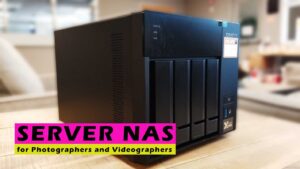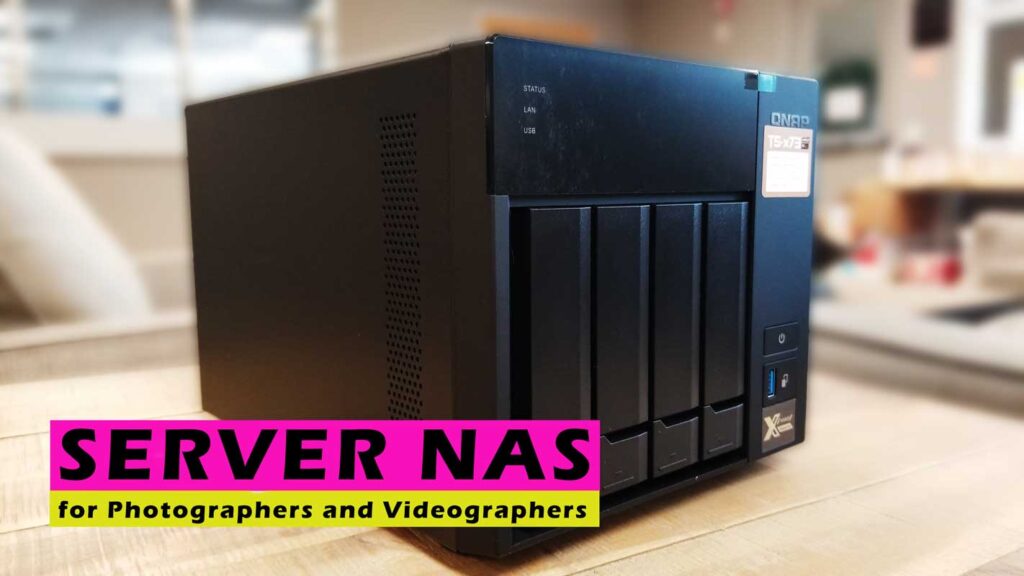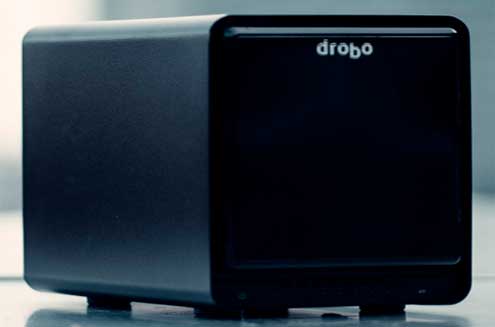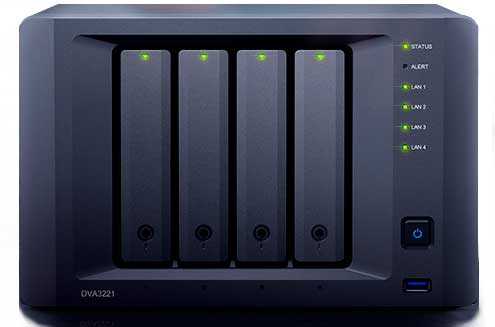As photographers or videographers and with the increasing size of multimedia content, we always need more storage space for our files, as well as backup options for all our data. This article is about the perfect Server NAS for Photographers and Videographers. Surely many of us are afraid of losing this data and if you are not, you should be. In this modern digital world, having a robust and reliable back-up system is always an advantage, especially when our data has a commercial purpose. For this reason, I recommend that you consider a NAS (network-attached storage) device. If we work especially with high-quality digital media such as RAW files for photography or 4k and 8K for video in our professional and recreational activity (from home or office), the performance and flexibility of a server NAS is what you need. The beauty of a Server NAS is that it is more than just a backup drive, it is actually your own smart computer that can potentially open up a wide range of opportunities for you and make digital life easier (and often cheaper). What is Server NAS? For those of you not familiar with NAS devices at all, I am going to quickly break down their basic functionality below. NAS units are made up of storage bays that allow you to easily swap Hard Drives or Solid State Drives. They also have their own Processor and RAM (Random Access Memory) and dedicated operating system. Server NAS is designed to be connected to a network even if your “network” just consists of one computer without any switch or other network devices. So while your external hard drive can only be connected to one computer, a NAS unit can be connected to the whole network of computers with multiple users and separate access permissions. In addition, you can set up your server NAS to be accessible anywhere in the world via the internet (your own personal cloud). You can think of a NAS device as a separate computer with or without a screen. NAS devices can use multiple storage drives and thus can have very large storage capacities. Previously NAS drives were simple appliances that could just store and distribute data, but with recent hardware and software developments, many of these devices can now serve as Cloud Storage, Media Server, Email Server, VPN Server, and much, much more. Plus they can do all of this with redundant backup configuration, so when one or more (depending on configuration) drives fail (and they will), all your data is still intact. When the NAS is connected to the internet, you can easily access all your stored data anywhere in the world. Functionality and price of NAS units can vary greatly on their brand and configuration, but you can always start with the budget model and expand to a more advanced system if you decide that Server NAS works for you. Please note that while NAS units are excellent solutions for backup it should not be the only way you save your files. We always recommend using various backup methods. These should include on-site and off-site solutions. Some of these NAS manufacturers offer bi-directional auto-backup between NAS units so that you can have similar boxes set up in separate locations and have them automatically sync data between each other. This way if disaster strikes at one location the other unit will still have your data. Features to look in a Server NAS for Photographers and Videographers The market is oversaturated with brands that offer numerous models of NAS units and it can be very confusing for a new user. Which features are essential? Of course, the priority of these features would depend on the function you want your NAS device to serve, so I am going to focus on items that a photographer and videographer like myself would most likely look for. Drive Bays: The first question you need to answer is how many storage drives will be used in your Server NAS. A typical small business NAS configuration can range from 2 to 8 bays. If you’re shooting in RAW or filming 4k Footage, 2 bay devices are almost out of the question, a 4 bay NAS device would be a nice starting choice. RAID: I strongly recommend a RAID setup on your NAS, the redundant one. That’s when the data is being replicated on multiple drives allowing for at least one drive to fail without any loss of data. This is another reason why you wouldn’t want to have a 2 bay NAS box. There are different types of RAID setups. To break it down in simple terms, you can either have a mirror setups where the data is broken in half (ex. 2x3tb drives with identical data on each) or 1-2 swappable drive RAID (ex. 4x3tb units where 1 drive can fail without loss of data). The downside of mirror setup is that you only have half of your storage capacity to use. Some manufacturers offer their own RAID configurations that have hybrid data splits. CPU: A CPU with multiple cores and higher clock speeds are preferred, especially if you’re going to have multiple users accessing files at the same time. RAM: Random-access memory is very important for large file transfers. For photographers/videographers, this feature is very important since our files are typically large. If you are planning to work on files directly on the NAS – the more RAM the better. 2GB is minimum, some brands let you manually expand RAM up to 8GB. Ethernet: NAS devices are primarily connected to a network via Ethernet cables. Different NAS boxes will have from 1 to several Ethernet ports. A single 1Gb port in theory can have up to 100Mbs of data transfer, but it practice it never reaches max and gets about 95Mbs. Many NAS units allow link aggregation if you have more than 1 Ethernet port, where you can use an additional switch to split the bandwidth and get up to theoreticalServer NAS for Photographers and Videographers




